Su Jin Oh
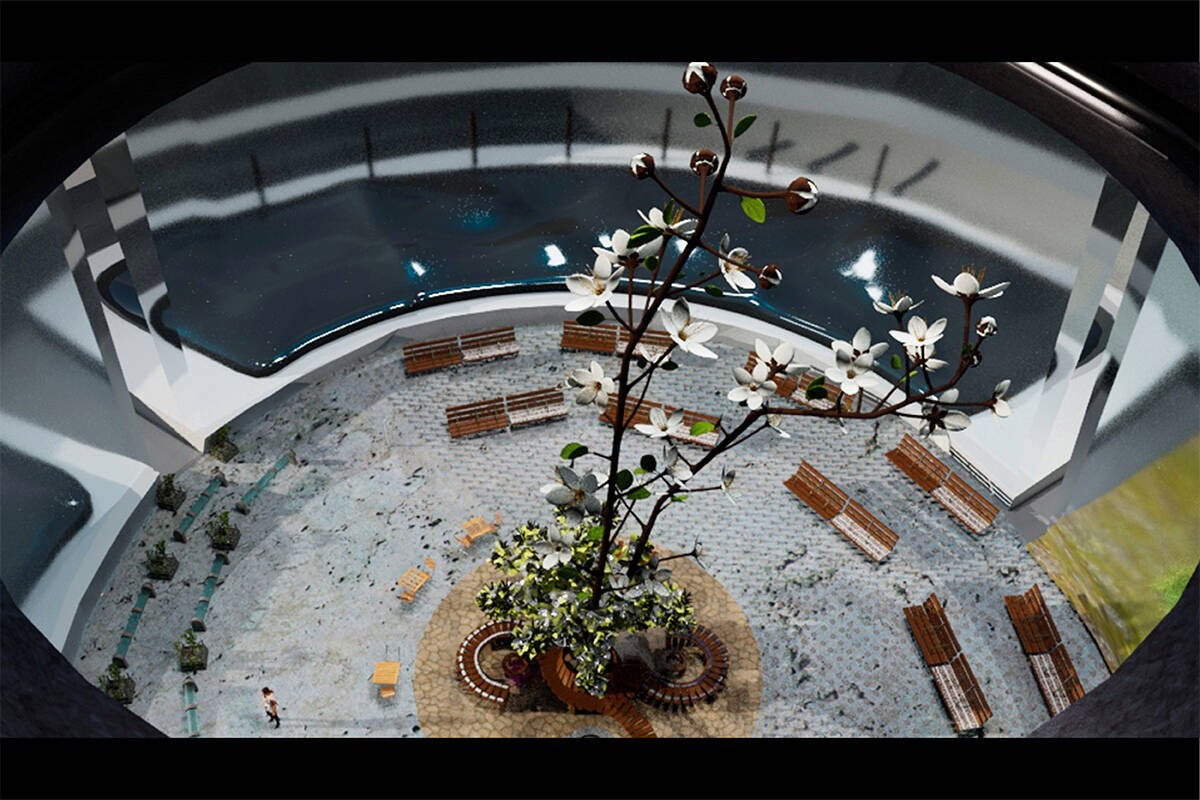
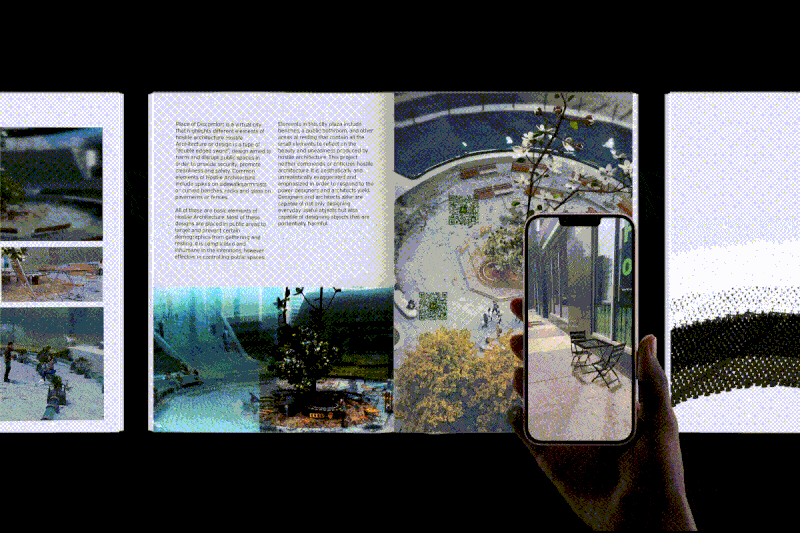
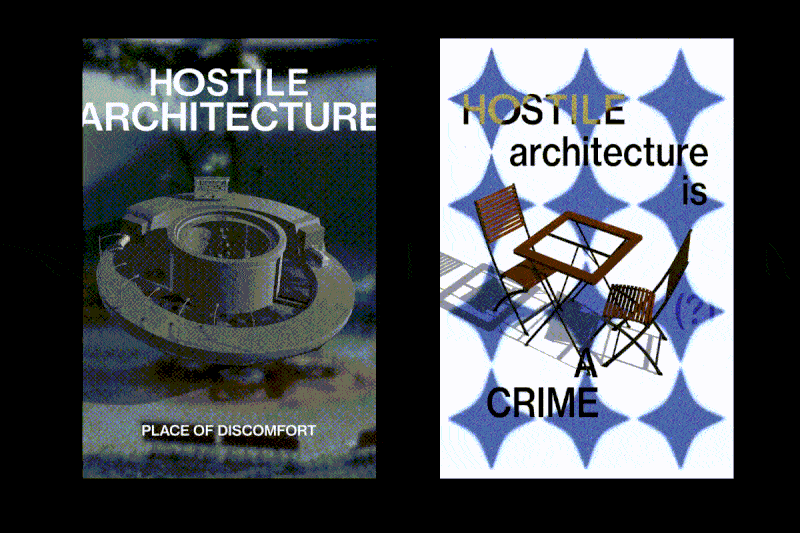
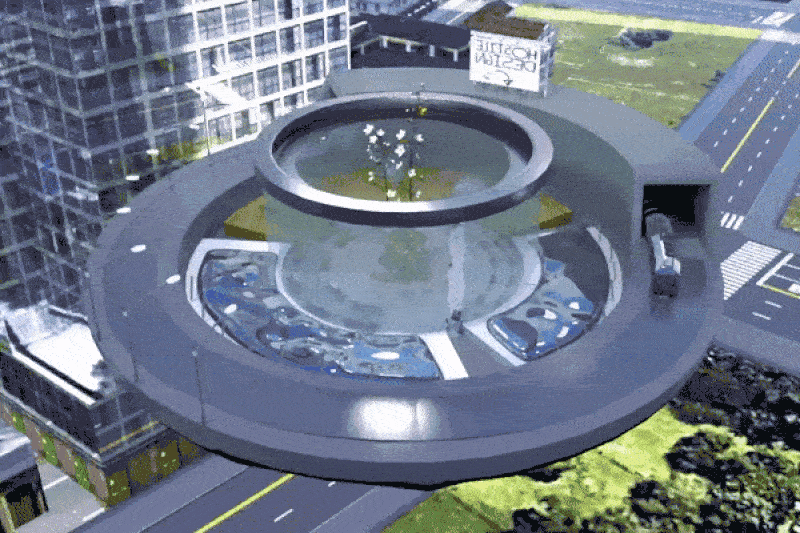
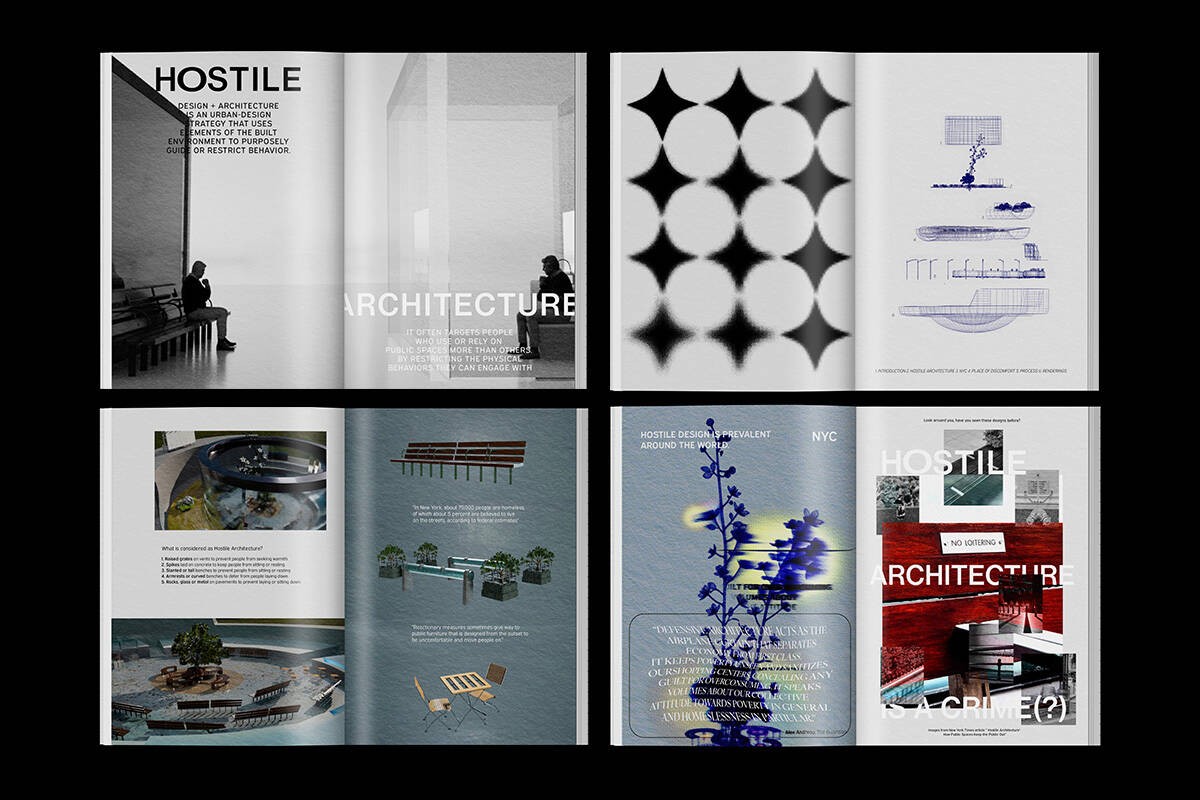
Place of Discomfort is a virtual city that highlights different elements of hostile architecture. Hostile architecture or defensive architecture, is aimed to harm or disrupt public spaces to provide security, and promote cleanliness and safety. Common elements of hostile architecture include spikes on sidewalks, armrests, curved benches, rocks, and glass on pavements or fences. All of these are basic elements of hostile architecture.
Most of these designs are placed in public areas to target and prevent certain demographics from gathering and resting. It is complicated and inhumane in its intentions, but effective in controlling public spaces. Elements in this city plaza include several benches, a transparent public bathroom, and other areas of resting that include hostility to reflect on the beauty and uneasiness produced by hostile architecture.
This city neither commends nor criticizes hostile architecture—it exists to aesthetically exaggerate and emphasize hostile architecture. The power that designers and architects hold is that they are not only capable of designing useful everyday objectives but also designing potentially harmful objects. This can be viewed as discriminatory or inhumane and contribute to a lack of inclusivity and accessibility in public spaces. As designers or planners, it is our responsibility to raise important questions about the role of public space.